Home
A comprehensive resource for safe and responsible laser use

FAA laser/aircraft incidents in 2013
In 2013, there were 3,960 laser illumination incidents reported by pilots to the U.S. Federal Aviation Administration. This is an average of 10.8 incidents every night.
For a comparison of 2013 to previous years, see the page 2004-2013 historical data.
What is an FAA-reported “laser incident”?: This is defined as an aircraft pilot seeing one or more laser beams during flight. A mid-2011 study by Rockwell Laser Industries of 6,903 incidents reported to FAA found that in 27% of incidents, beams entered the cockpit (passed through the windscreen). For example, in 2011, there were 3,591 incidents of which approximately 970 (27%) involved beams in the cockpit according to Rockwell.
Additional news articles with statistics about laser use -- for example, in countries outside the U.S. -- are here. For more information on how to find news articles on various topics, see this page.
2013 eye effects or injuries
FAA did not report any pilots as having had eye injuries in 2013. The FAA’s use of “injury” likely means a “long-lasting or permanent damage to the retina or other eye structure.”
In previous years, FAA reported details about temporary adverse effects such as flashblindness, afterimage, blurry vision, eye irritation and/or headache. But in 2013, FAA has not listed these temporary effects in available records, so the number for 2013 is unknown.
In past years, typically about 1% of illumination incidents resulted in temporary adverse effects. Assuming this holds for 2013, there would have been about 40 incidents with temporary adverse effects. According to an FBI news story, “As of December 2013, the FAA has documented at least 35 incidents where pilots required medical attention after a laser strike.”
2013 incidents by altitude
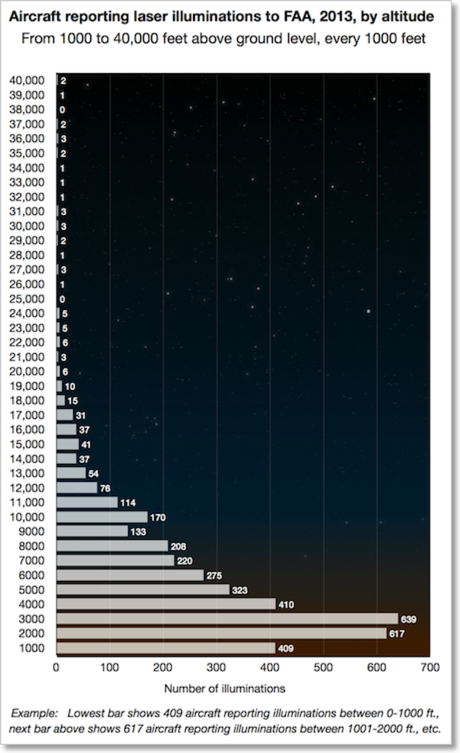
Click for larger view
The chart below is a close-up near the ground, of the first 4000 feet of altitude. This shows better the distribution of low-altitude incidents, especially below 1000 feet.
There are clumps every 500 feet -- such as at 1000, 1500 and 2000 -- because it is more likely for a pilot to round off his or her altitude estimate to the nearest 500 or 1000 feet.
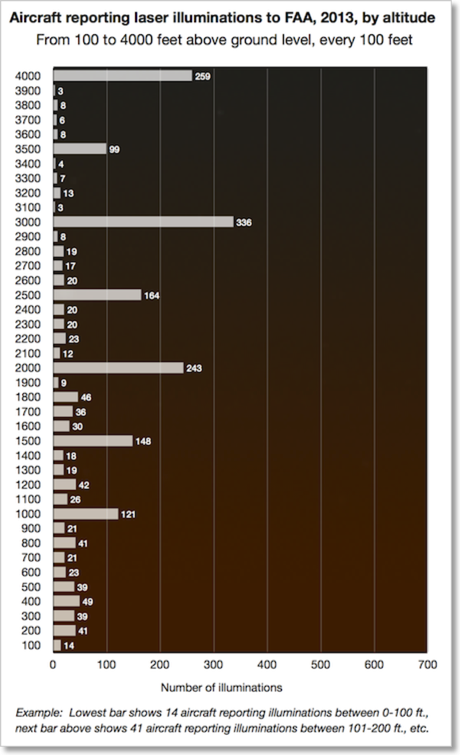
Click for larger view
2013 incidents by laser beam color
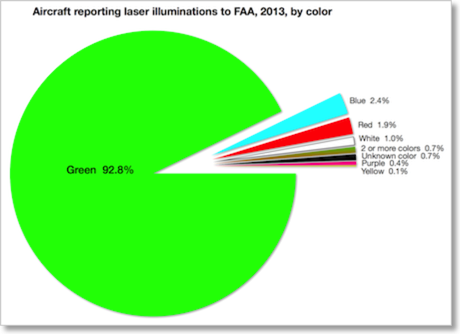
Click for larger view
2013 incidents by state
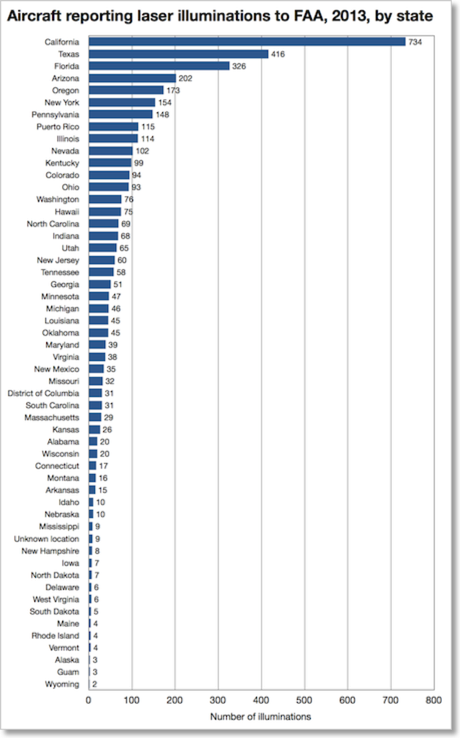
Click for larger view
2013 incidents by city/region
Note about the data: The numbers shown here were compiled by LaserPointerSafety.com from FAA data. The numbers here may differ slightly from those reported by others, such as FAA or FBI. This is because there are some anomalies in the underlying data, such as misspellings which may or may not be caught by FAA, FBI or LaserPointerSafety when compiling the totals for each city or region.
Also, LaserPointerSafety has added L.A., Van Nuys and Burbank together, which puts this region as our #1 in the U.S. for laser incidents. The FBI states that Portland, Ore. is #1 since they separately break out Van Nuys and Burbank.

Click for larger view
2013 incidents by closest airport
Note that these incidents may not have happened immediately in and around the listed airports. For example, an incident may have occurred within the city, such as police helicopters patrolling downtown. Or they may have occurred in a rural area. FAA assigns each incident to the closest airport, even if it was not in the immediate vicinity of the airport, or the flight paths in and out of the airport. The chart below lists these closest airports.
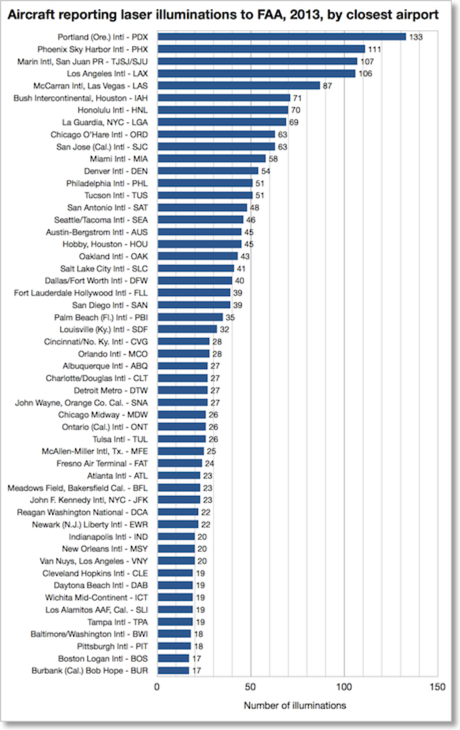
Click for larger view